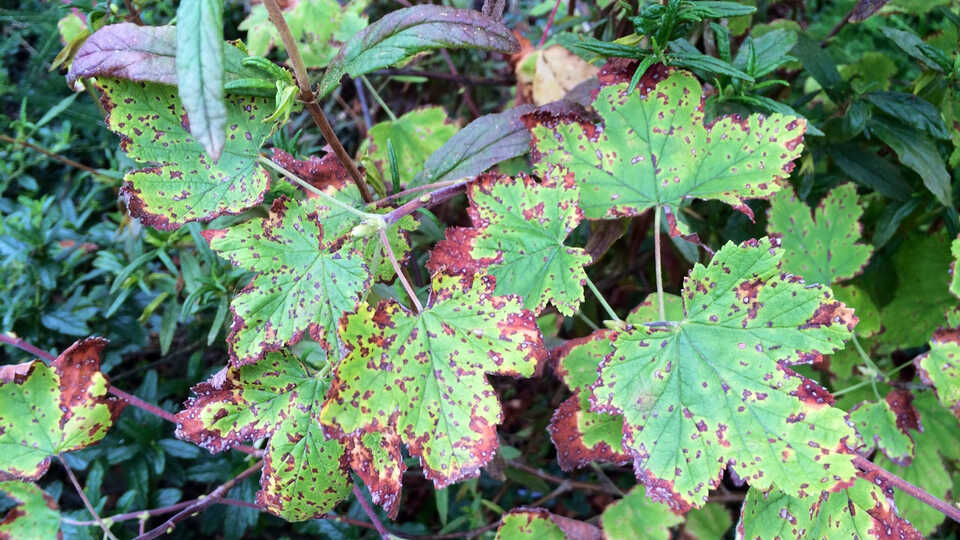Students will:
- make observations and record information in a schoolyard and/or garden setting to describe leaf patterns in the natural world.
- make inferences on how the sun and shade contribute to differences in leaf color and texture.

Students head outside to look closely for patterns of leaves in a shady environment vs. a sunny environment. In what ways are the colors the same or different?
Students will:
Prior to the activity, identify a sunny and a shady location in the garden (school garden, yard, or neighboring area)to use for observations and data collection. Take in mind to choose plants in the sunny location that show traits that are responding to the sun, as mentioned in the Background for Educators. It doesn’t have to be the same species, but kudos if the same species is found in both the sunny and shady location.
Teacher Tip: You can also make observations by looking at leaves in trees and larger shrubs. Note that this activity can still be accomplished if students are looking at only one plant. Students can observe leaves from the outermost parts of the tree that are exposed to direct sun and compare them to leaves growing in the shady inner reaches of that tree.
Teacher Tip: Remember, the focus is on the response to the environment rather than adaptation. You can go into adaptation as little as possible if you’d like. This of course will depend on your curriculum and/or grade level.
Discuss the following questions: Use connections as described below to help students make connections as to why they saw what they saw.
environment: the area in which something exists or lives.
adaptation: what a plant or animal has or does that helps them live.
response: how a plant behaves toward conditions in its environment (such as exposure to sunlight) that can change how it looks and feels.
Plants have basic needs just like all living things. Plants require light, air, water, and nutrients, (known as the acronym, LAWN) for survival. Plants meet the needs of their environment in a variety of ways. For instance, leaf adaptations aid in a plant’s survival in different environments.
In hot, sunny, dry environments plants have developed adaptations to respond to high levels of sunlight and heat and very little water. Leaves are important for retaining valuable water and preventing excess heat absorption. Leaves tend to be small, leathery, or light in color, to protect themselves against the sun’s rays. In moist, shady environments, the reverse occurs - light is now a limiting factor and water is more abundant. Leaves are often large and a rich to dark green color, to maximize sunlight absorption. These inherited characteristics are traits that are consistent for the plant from year to year.
Leaf characteristics are not entirely based on a plant’s adaptation to its environment. Environmental conditions, such as water (drought, storms), soil nutrients, sunlight and weather, can all affect how a plant responds and grows. Leaf color and texture can change as a response to environmental conditions. These non-inherited characteristics are traits that can vary from year to year depending on the environmental conditions.
Leaf color can sometimes be indicative of whether a plant is stressed in its environment. If a plant is exposed to extreme heat and sunlight, leaves will display signs of heat stress and can even get sunburned! Excessive heat can cause an imbalance in transpiration (the process of giving off vapor containing water and waste products, especially through the stomata on leaves). Evaporation rates will exceed the rate that a plant can take in moisture, and the plant becomes dehydrated. Leaves can feel leathery and begin to show signs of yellow as the chlorophyll (the main photosynthetic pigment) deteriorates. And just like with humans when we get sunburned, leaves can take on a reddish purple tint, or develop what looks like freckles (dark red to brown spots).
Science and Engineering Practices (K-2)
Planning and Carrying Out Investigations
Analyzing and Interpreting Data
Disciplinary Core Ideas
2. LS2. A: Plants depend on water and light to grow. (2-LS2-1)
2. LS4.D. Biodiversity and Humans: There are many different kinds of living things in any area, and they exist in different places on land and in water. (2-LS4-1)
Crosscutting Concepts (K-2)
Kindergarten
Life Sciences 2a, 4a, 4b, 4e
Grade One
Life Sciences 2a, 4b
Grade Two
Life Sciences 2d
Learning from Leaves: A Look at Leaf Color. The Huntington Library, Art Collections, and Botanic Gardens. Botanical Garden Programs: Reading Plants.
Heat Stress. Susan Jones. American Orchid Society. JULY 2004 issue of Orchids: The Bulletin of the American Society.
Plants and the environment. Bay Area Scientists in Schools Presentation Plan. Community Resources for Science.